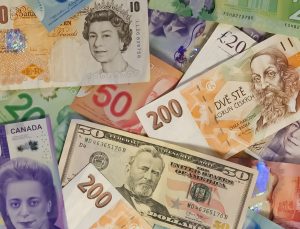Forex trading has gained immense popularity in recent times, with more and more people venturing into this space. The forex market is the largest and most liquid financial market globally, with an average daily turnover of over $5 trillion. The market is accessible to anyone with an internet connection, and the cost of entry is relatively low. However, there are some costs associated with trading forex, and it’s important to understand these costs to make informed trading decisions. In this article, we will discuss the various costs involved in forex trading and how much it costs to trade forex.
Spread
The spread is the difference between the bid price and ask price of a currency pair. It’s the primary cost associated with forex trading, and it’s how forex brokers make money. The spread varies depending on the currency pair, the time of day, and the broker. It’s important to note that some brokers offer fixed spreads, while others offer variable spreads. Fixed spreads remain constant, regardless of market conditions, while variable spreads fluctuate depending on market volatility.
Commission
In addition to the spread, some brokers charge a commission for each trade. The commission is typically calculated as a percentage of the trade’s notional value and is added to the spread. The commission varies depending on the broker and the account type. Some brokers offer commission-free accounts, while others charge a commission on every trade.
Swap
Forex trading involves borrowing one currency to buy another. When a trade is held overnight, the trader pays or receives a swap rate, which is the interest rate differential between the two currencies. The swap rate is calculated based on the notional value of the trade and the interest rate differential between the two currencies. The swap rate can be positive or negative, depending on the direction of the trade and the interest rate differential.
Slippage
Slippage occurs when the price at which the order is executed differs from the price at which it was placed. This can happen when market conditions change quickly, and the broker is unable to execute the order at the desired price. Slippage can be positive or negative, depending on whether the execution price is better or worse than the requested price.
Inactivity Fees
Some brokers charge inactivity fees if the trader doesn’t place any trades for a certain period. The inactivity fee varies depending on the broker and the account type. It’s important to note that some brokers waive the inactivity fee for active traders.
Account Fees
Some brokers charge account fees, such as account opening fees, account maintenance fees, and account closing fees. The account fees vary depending on the broker and the account type.
How Much Does It Cost to Trade Forex?
The cost of trading forex varies depending on several factors, such as the broker, the account type, the trading platform, and the trading volume. The table below shows the typical costs associated with forex trading.
Cost Description
Spread The difference between the bid price and ask price of a currency pair.
Commission A fee charged by some brokers for each trade.
Swap The interest rate differential between the two currencies when a trade is held overnight.
Slippage The difference between the requested price and the execution price of a trade.
Inactivity Fees A fee charged by some brokers if the trader doesn’t place any trades for a certain period.
Account Fees Fees charged by some brokers for opening, maintaining, or closing an account.
Conclusion
Forex trading can be a profitable venture, but it’s important to understand the costs associated with it. The cost of trading forex varies depending on several factors, such as the broker, the account type, the trading platform, and the trading volume. The primary cost associated with forex trading is the spread, which is the difference between the bid price and ask price of a currency pair. In addition to the spread, some brokers charge a commission for each trade, and there are also swap rates, slippage, inactivity fees, and account fees to consider. It’s essential to research the costs associated with forex trading and choose a broker that offers competitive pricing and transparent fees.





